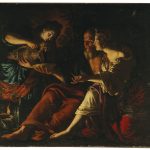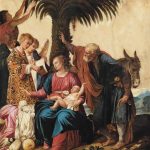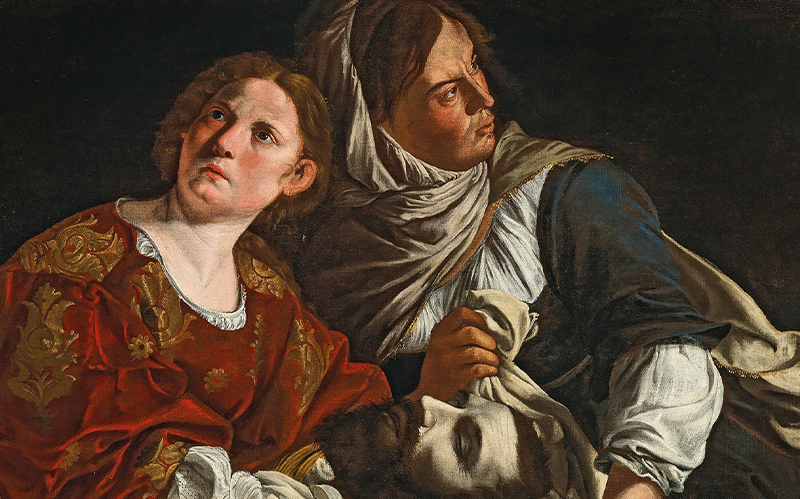
The Old Master Paintings sale at Dorotheum on 8th June, includes a selection of significant 17th century paintings by artists drawn together as friends and colleagues by the influence of Michelangelo Merisi da Caravaggio.
Early 17th century Rome was a cosmopolitan center of an energized Catholic church. With no more than 100,000 inhabitants, Rome was small enough to allow for artistic interaction, and populous enough to become a vibrant center of cultural exchange. It is easy to imagine how the artists under the influence of Caravaggismo came into contact with one another as they responded to a world in which the style and the very purpose of the arts was being reinvented around them.
Michelangelo Merisi da Caravaggio
Caravaggio (1571–1610) himself was forced to flee Rome in 1606 after a violent fight which ended tragically in murder. He would never return. His towering influence however would remain. A new generation of artists gathered to study the stylistic novelties he had introduced, creating a heterogeneous body of work, often overlapping and exercising artistic influence on one another, as we see reflected in the works gathered together in the upcoming auction.
Caravaggisti
Orazio Gentileschi (1563–1639) knew Caravaggio personally and most of the younger artists encountered the work of Caravaggio through him and other early interpreters, all of whom were tightly enmeshed in a net of interpersonal and professional relationships. Orazio’s daughter, Artemisia Gentileschi (1593–1653) for instance, was profoundly influenced by Caravaggio in her own right, and was active in Rome between 1608 and 12, after which she left the city due to the scandal surrounding her abuse by Agostino Tassi. The Venetian artist Carlo Saraceni (1579–1620) is a documented as a witness against Tassi at her famous trial, confirming their contact with one another. Other instances of the close involvement of the artists of this genre include Giovanni Francesco Guerrieri (1589–1655) who moved to Rome in 1606 lived in a convent not far from Orazio´s workshop. Domenico Fiasella (1589–1669) arrived in Rome from Liguria one year later and although there is no proof of his direct relationship with the Gentileschi there, he had previously studied under Orazio´s brother, Aurelio Lomi,, when he was living in Genoa. Followers of Caravaggio´s work could also be found amongst foreign artists in Rome. Artemisia met the French painter Simon Vouet (1590–1649), after her return to Rome in 1620 and the two went on to have a productive, mutually beneficial, professional relationship. Another artist in the circle around Vouet was Nicolas Regnier (1591–1667), the two probably brought together through their shared nationality.
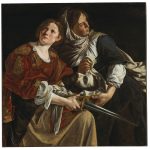
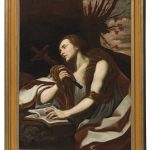
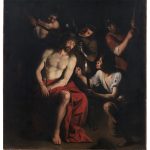
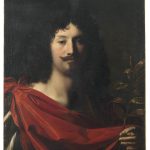
Empowerment and Change
These artists and their colleagues were working together in a time of unprecedented artistic empowerment and change, and the work they produced reflected the guidelines imposed on them by the newly strengthened church. In the wake of the Council of Trent (1545–1563), the arts were pressed into the service of the Counter-Reformation, exerting the influence of the church against the attacks made on it by nascent Protestantism. The Council set out to reform the arts. Their purpose was to instruct the masses in the teachings of the church. Henceforth, works of art should be functional and didactic, their subject matter clear and easily understandable, their style true to real life. The church discouraged extravagance and affectation or the superfluous elegance that had been the fashion in the recent years of Mannerism.
In the years that followed, artists such as Caravaggio and his followers would respond to this exhortation with a new naturalist, painterly style which was to dramatically alter the character of European art.
The Caravaggisti worked together until about 1620, after which the group began to dissolve as each of the artists abandoned the Eternal City. Gradually they departed from the Roman model and began to incorporate elements of other local artistic influence from Naples, Venice, Genoa and beyond the Alps, leaving behind the ghost of an artist whose work for so many years had drawn them together and exercised a continuous fascination on them.
Mark MacDonnell is a specialist in Old Masters Paintings at Dorotheum.
AUCTION
Old Masters Paintings
8 June 2021

